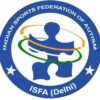🔷 Classification
At the Indian Sports Federation of Autism (ISFA), athlete classification ensures fair competition and meaningful participation. We follow an inclusive, ability-based classification model based on global standards tailored to the needs of individuals with Autism Spectrum Disorder (ASD) and associated conditions.
🧠 Understanding the Autism Spectrum
Autism Spectrum Disorder (ASD) encompasses a range of neurodevelopmental conditions affecting communication, social behavior, sensory processing, and motor skills. ISFA acknowledges the following profiles for classification:
- ASD-1: High-functioning Autism / Asperger’s Syndrome
- ASD-2: Mild Autism with verbal strengths
- ASD-3: High Functioning Autism (HFA) with delayed speech history
- ASD-4: PDD-NOS (Pervasive Developmental Disorder – Not Otherwise Specified)
- ASD-5: Classic or Severe Autism (Non-verbal or low-functioning)
- ASD-6: Rett Syndrome (genetic condition affecting girls)
- ASD-7: Broad Autism Phenotype (mild traits not affecting daily function)
- ASD-8: Autism with co-occurring ADHD (attention, impulse, and focus issues)
🎽 Sports Classification Categories
ISFA classifies athletes into skill-based divisions depending on:
- 🧩 Motor coordination and mobility (including use of assistive devices)
- 🗣 Communication and social interaction ability
- 🧠 Cognitive and behavioral regulation
- 🏃♂ Physical strength and sport-specific capability
Based on these factors, athletes participate in levels such as:
- Level A – Independent and Competitive
- Level B – Semi-Assisted or Guided
- Level C – Fully Assisted with Aids or Wheelchair
⚖ Fair Play & Inclusion
Classification is conducted during initial athlete registration and reviewed periodically. ISFA ensures:
- ✅ Ethical and non-discriminatory evaluation
- ✅ Trained coaches and classifiers for assessment
- ✅ Transparency and consent with families and caregivers
Our inclusive design allows individuals to participate at all ability levels — from assisted walks t
